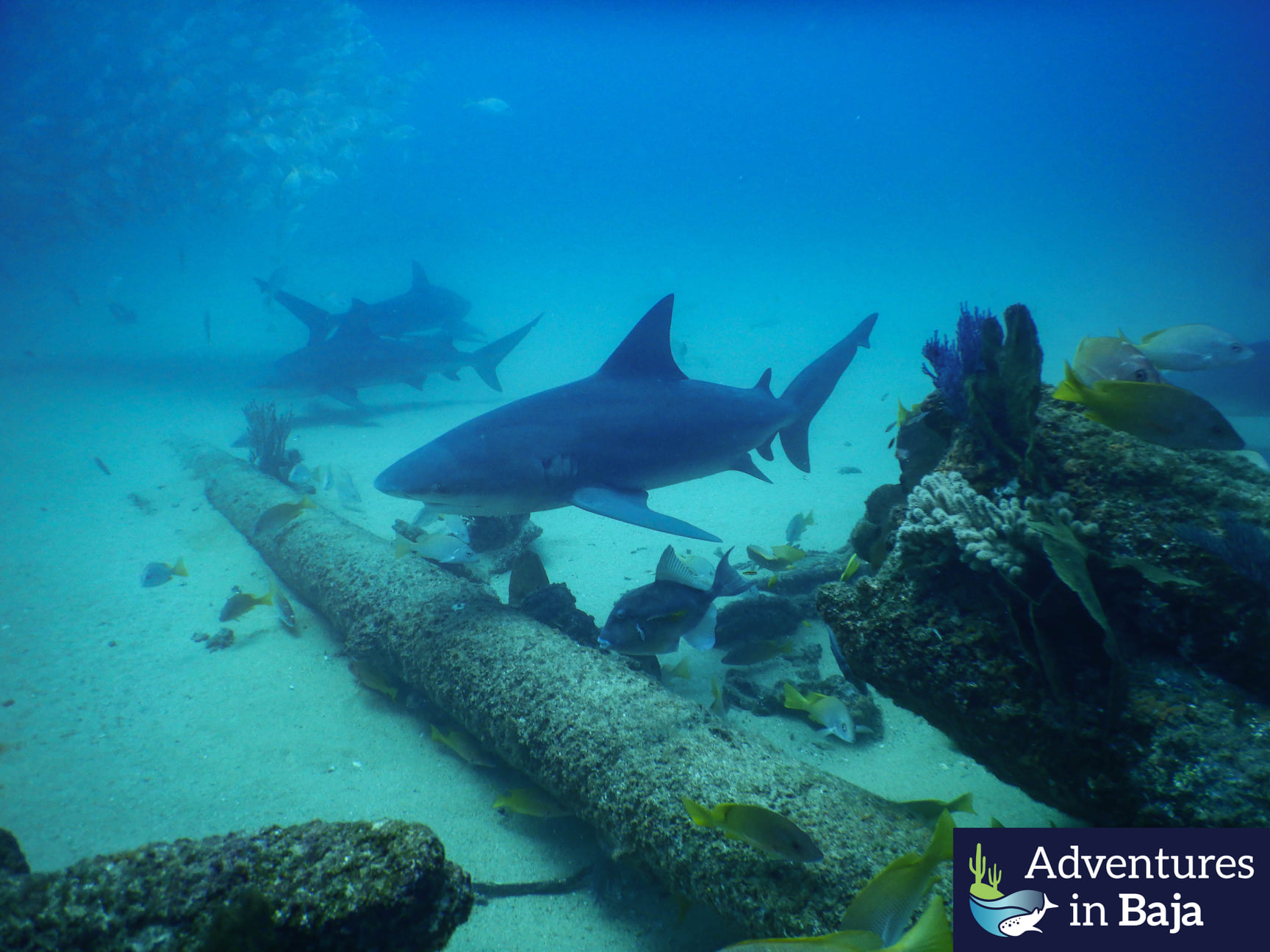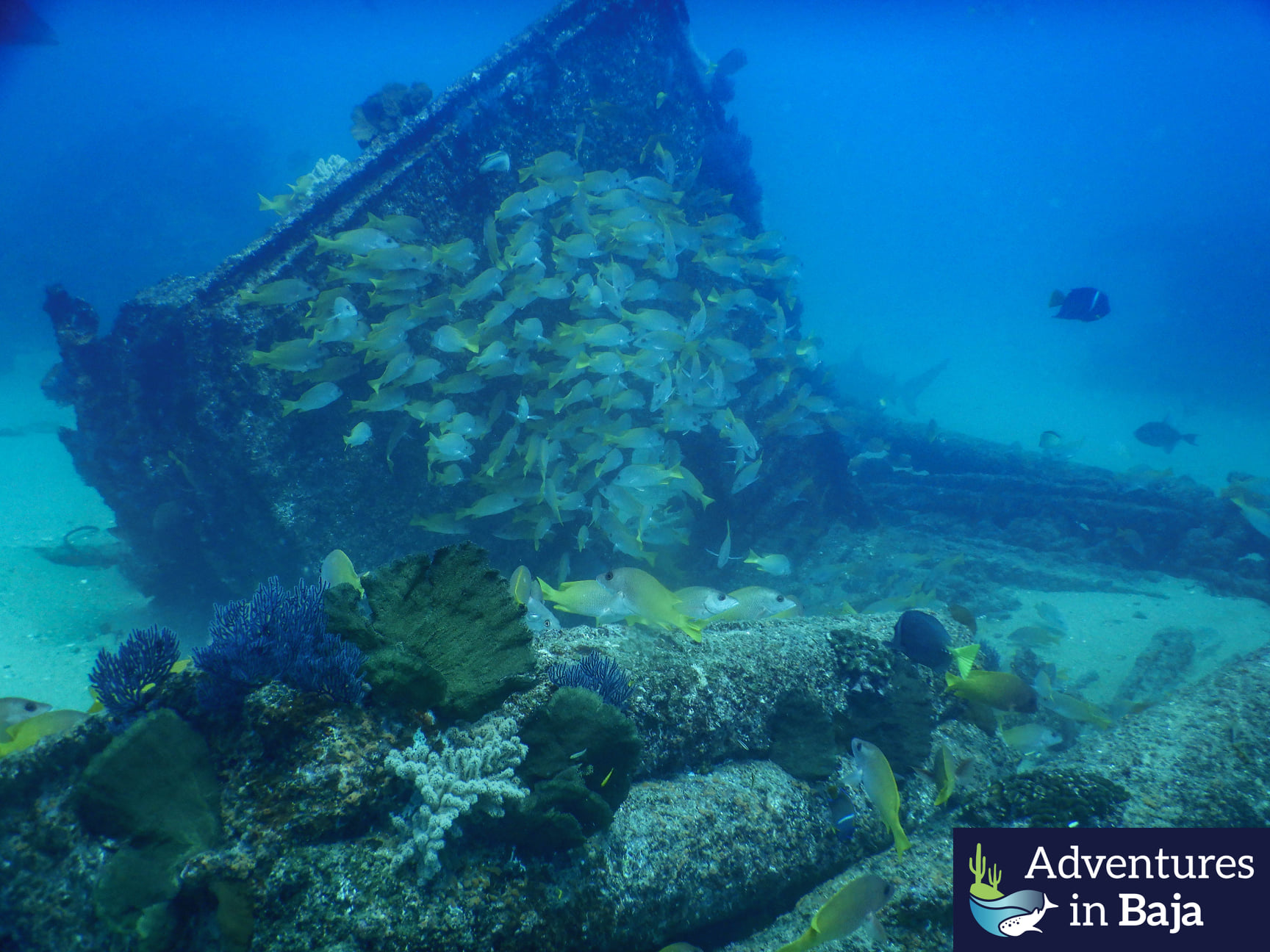If you’re an experienced diver you’re almost certainly familiar with the name, even if you haven’t been lucky enough to go there as yet. If you’re a beginner, it’s a name that should be learned and instantly added to your dream list of destination dive sites you someday want to experience. Cabo Pulmo is that special, that unique…its story is that unusual, its location is that breathtaking. It doesn’t hurt, of course, that Cabo Pulmo is located in sunny Los Cabos, home to a wide variety of other vacation inducements, from glorious beaches and boutique resorts to pampering spas and world-class wining and dining. But make no mistake, diving in Cabo Pulmo National Park is reason enough to plan the trip in the first place.
Why? Let’s start with the story.
The Story of Cabo Pulmo
In the early 1970s, when Mexican tourism trust FONATUR was first beginning to develop two small towns on the southernmost rim of the Baja California peninsula, Cabo San Lucas and San José del Cabo, into vacation destinations of international stature, Cabo Pulmo was still largely unknown.
Located in the still largely undeveloped East Cape region of Los Cabos, which stretches for more than 70 miles northeast along the coast from San José del Cabo to Los Barriles, Cabo Pulmo is, even today, little more than a village, with scarcely 100 residents. Originally founded by pearlers in the 18th century, its small population spent much of the time since engaged in commercial fishing, an occupation which sustained them until relatively recently.
In this the townspeople of Cabo Pulmo were in good company. The Gulf of California (or Sea of Cortez as it is more commonly known locally) had long been famed for its abundance, and indeed the tourism industry as it developed in places like San Felipe, Loreto, La Paz and Cabo San Lucas was largely driven–at least initially–by the allure of big-game sport fishing…which replaced or was practiced in conjunction with the existing commercial fishing industries.
Even abundance has limits, however, and Cabo Pulmo soon found itself, like many regional communities, facing the consequences of overfishing. In the early 1980s, researchers from the Autonomous University of Baja California Sur studied Cabo Pulmo’s offshore coral reef–the only one in the Sea of Cortez, and at 20,000 years of age, one of the oldest in North America–and discovered a troubling degradation in this unique ecosystem caused by overfishing and pollution.
What followed was one of the great ecological success stories of our time. After ten years of intense activism by the local community, Cabo Pulmo became a protected sanctuary when it was declared a national marine park in 1995 (it was later reclassified as a national park in 2000), and has since been named a UNESCO World Heritage Site (2005) and a Ramsar Wetland of International Importance (2008).
In the 25 years since it became a national park, Cabo Pulmo hasn’t just rebounded. It has been resurgent. Over that time period, the park has enjoyed an unprecedented 465% increase in growth. Cabo Pulmo now claims the greatest abundance and population density of any area in the Sea of Cortez, protecting over 800 varieties of fish and 2000 species of marine invertebrates.
And, of course, at the heart of it all is the living coral reef, a thriving testament to marine biodiversity, and the reason diving in Cabo Pulmo is such an incredible experience. Coral reefs, after all, have the highest diversity of any ecosystem on the planet (outpacing even rain forests), and are literally teeming with life.

Cabo Pulmo – Diving Beneath the Surface
Unlike many of the famed dive sites in Cabo San Lucas Bay, which can easily be explored in the course of one or two tank dives…diving in Cabo Pulmo presents a daunting array of possibilities given that the park encompasses some 7,111 hectares (about 27.5 square miles), with eight fingers of hard coral reef. Thus, finding experienced guides like Adventures in Baja is highly recommended.
Adventures in Baja is certified for national parks like this one, and over the past six years the company’s owner and chief guide, Karen Bradfield, has become expert in leading private and small group tours at sites throughout Cabo Pulmo.
This familiarity with the park and its undersea attractions allows Adventures in Baja to work closely with divers to sketch out a dive plan based on factors like skill level, how much time they have to explore Cabo Pulmo, and the varieties of marine life they particularly want to see. Are you like Karen and love sharks? Want to see dolphins? Sea turtles? Tropical fish?
For those already salivating at the chance to visit this undersea fantasia, here’s a sneak peek at some of the things divers can expect to see at the park’s premier dive sites:

El Vencedor (“The Winner”)
Depth: 45 feet/14 meters
A perennial Cabo Pulmo scuba diving highlight, this site is named after a small cargo ship that sank here 35 years ago. Ruins remain scattered on the seabed and form a wonderful underwater haven for marine life. This site is famed for bull sharks and schooling snappers, but divers may also encounter dogtooth snapper, groupers, golden groupers, giant moray eels, amber jacks, and skipjacks, with many garden eels visible along the seafloor.
The Tornado of Big Eye Jacks
Big eye jacks congregate here en masse to reproduce, forming a massive tornado-like column in the water that is truly awe-inspiring to witness. The sheer numbers are a testament to the conservation efforts in the park, and have inspired more than a few wildlife photographers. Divers may also see dolphins following in search of a snack, or giant diamond rays lurking in the sand.
El Bajo (“The Low”)
Depth: 30 to 60 feet/9 to 18 meters)
A reef bar that extends across the park with 12 of the 14 coral species in the world, this is a fantastic environment for spotting all manner of marine life, from colorful tropical fish and schools of groupers to large sea turtles and mobula rays.
El Cantil (“The Cliff”)
Depth: 45 feet/15 meters
These north and south reef canyons are home to a rich diversity of marine life, the reef has deep canyons that act as great sheltering spots for the tropical fishes. White and black tip reef sharks are often seen here. Nurse sharks are also spotted here.
Meros (“Groupers”)
Depth: 30 to 60 feet/9 to 18 meters
This reef bar is situated at the most northerly point of the park and is distinguished by meandering coral and rock formations. Due to its position, transiting whale sharks and mobula rays are oft sighted here, as are sea turtles and tropical fish. During winter months, divers are treated to an undersea symphony: the songs of humpback whales.
El Cien and Esperanza (“The Hundred” and “Hope”)
Depth: 100 feet/30 meters
These deeper reef bars are for advanced certified divers only, but those with the requisite experience will be treated to a wealth of pelagic fish here, highlighted by numerous types of sharks (bull, sand, tiger and nurse, to name but a few). Schooling tuna and bigeye trevally often cruise overhead, and sightings of mobula rays and colorful tropical fish are likewise common.
Los Islotes (“The Islets”)
Depth: 60 feet/18 meters
This seamount is at the south of the park and rich with coral and an array of waving sea fans. The site drops dramatically to a sandy seabed where large boulders create hiding places for tropical fish and moray eels.
These sites offer amazing diving experiences on a year-round basis, but it should be pointed out that peak conditions for “diving in Cabo Pulmo” are between the months of July and January, when water temperatures are at their warmest and visibility is at its highest.
Which is to say…right now!
About Adventures in Baja
Born in Portsmouth, England, Karen Bradfield had a childhood fear of sharks. She faced that fear as an adult during a night dive on the Great Barrier Reef in Australia and has never looked back, becoming a PADI Divemaster and traveling the world in search of adventures and worthy causes…from rescuing monkeys in Bolivia to sailing an expedition yacht to Antarctica…from working with “The Floating Doctors” charity of the Caribbean to training wild horses in Argentina.

Overwhelmed by the biodiversity of Baja California Sur during a dive trip, she founded Adventures in Baja in 2014, and in the six years since, has become a leader in the movement towards personalized, small group tours with a focus not only on once-in-a-lifetime adventures, but also ecology and sustainability. Adventures in Baja has been honored with a Travelers Choice Award from Trip Advisor for 2020, and is a member of Zero Waste Los Cabos, working actively with several prominent groups to help protect the wildlife and environment–land and sea–of this incredible area.
Whether it’s snorkeling or diving in Cabo or Cabo San Lucas, swimming with whale sharks in La Paz, or whale watching in Los Cabos, Loreto or Magdalena Bay, Adventures is Baja is the company of choice for those who not only want to see and intimately experience some of the most beautiful places on Earth, but help to keep them that way.
Want your business, activity or event featured and promoted by CaboViVO, please be sure to contact us here, thanks…
Saludos from Co-Founders…
Chris Sands – Writer and Michael Mattos

